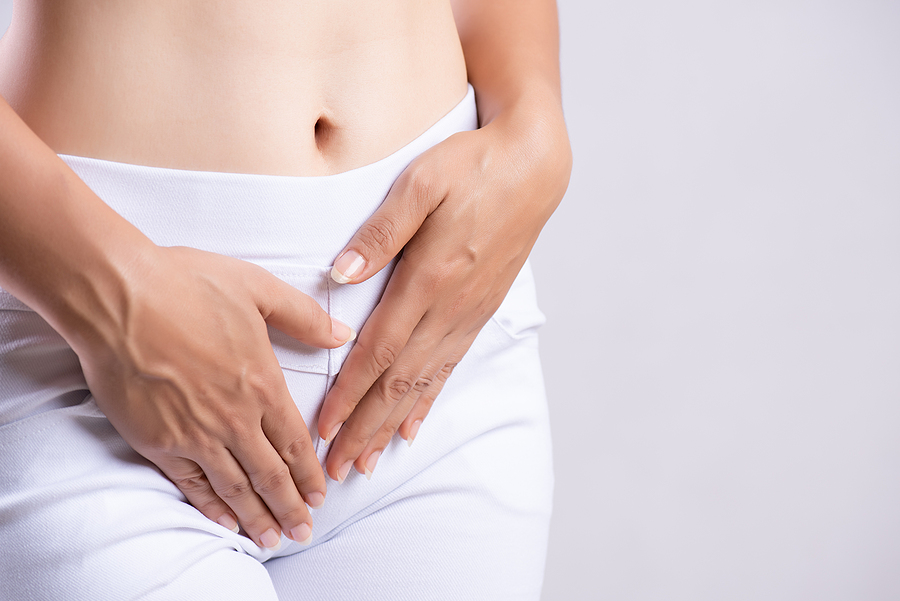A yeast infection, also known as candidiasis, is an infection caused by a type of fungus called Candida. It is one of the most common types of vaginal infections and can affect women of all ages. The most common symptom of a yeast infection is itching or burning in the vagina and vulva, but some women may also experience pain during urination or sex, redness and swelling in the area, and a thick white discharge that looks like cottage cheese.
It is important to note that while yeast infections can cause cramps, they are not the only cause of cramps. Cramping can be caused by other conditions such as endometriosis, pelvic inflammatory disease (PID), ovarian cysts, uterine fibroids, or even appendicitis. It is important to visit your healthcare provider if you are experiencing cramping so that they can properly diagnose the cause and provide treatment if necessary.
If you do have a yeast infection, there are several treatments available to help relieve your symptoms including over-the-counter medications such as miconazole or clotrimazole. Your doctor may also prescribe an oral medication such as fluconazole if your symptoms are severe or do not respond to self-treatment with over-the-counter medications. It is important to follow your doctor’s instructions for taking any medication for a yeast infection and to finish all of the prescribed doses even if your symptoms improve before you finish the course of treatment.
It is also important to practice good hygiene when treating a yeast infection in order to reduce your risk of reinfection or spreading the infection to someone else. This includes washing the affected area with warm water and mild soap tice daily, avoiding tight clothing and pantyhose, using only white cotton underwear that fits loosely around the crotch area, changing wet swimsuits immediately after swimming pool use, avoiding douching and sexual intercourse until all symptoms have cleared up completely.
Yeast infections can be uncomfortable but they don’t have to be debilitating—with proper diagnosis and treatment they can be easily managed!
The Relationship Between Yeast Infections and Abdominal Pain
Yes, yeast infections can cause abdominal pain. Common symptoms of a yeast infection include vaginal itching, burning, discharge and pain with sexual activity. In some cases, the pain may be localized to the lower abdomen. Other symptoms may include nausea, vomiting and fever. If you experience any of these symptoms along with abdominal pain, it is important to see a doctor for diagnosis and treatment.

Can Yeast Infections Cause Pelvic Pain?
A yeast infection, also known as candidiasis, is an overgrowth of fungus in the vagina caused by an imbalance of bacteria. While this type of infection is not typically associated with pelvic pain, it can case other uncomfortable symptoms such as itching, burning, and a thick white discharge. In rare cases, if the infection spreads to or involves the internal organs in the abdomen, pelvic pain may develop. Additionally, scar tissue or adhesions that form as a result of infection or surgery can cause lasting pelvic pain and discomfort. It is important to speak to your doctor if you experience any symptoms suggestive of a yeast infection or if you are experiencing persistent pelvic pain.
Are Yeast Infections Commonly Accompanied by Cramps?
Yes, cramps can be a common symptom of a yeast infection. Yeast infections are caused by an overgrowth of the fungus Candida albicans, which is naturally present in the vagina. Symptoms can include itching, burning sensations, thick white discharge, and lower abdominal or pelvic cramping. If you experience any of these symptoms, it is important to see your doctor as soon as possible for diagnosis and treatment.
Can Yeast Infections Cause Cramps and Back Pain?
No, a yeast infection cannot typically cause cramps or back pain. A yeast infection may cause discomfort in the vagina or vulva, but it is not likely to be the cause of cramps or back pain. Some other possible causes of cramps and back pain can include muscle strain, inflammation or irritation in the lower back, endometriosis, or even kidney stones. To determine the exact cause of your symptoms, it is best to make an appointment with your doctor for a diagnosis.
Severe Symptoms of a Yeast Infection
Severe symptoms of a yeast infection can include intense burning, itching and irritation in the vagina and vulva, redness and swelling of the vulva, pain and soreness during intercourse, a rash on the vulva, thick white vaginal discharge with a cottage cheese-like appearance, watery vaginal discharge, and severe discomfort or pain while urinating. If you experience any of these symptoms or suspect you may have a yeast infection, it is important to see your doctor for diagnosis and treatment.

Symptoms of a Yeast Infection
A yeast infection can cause pain in the vulvar and vaginal tissues, as well as burning, itching, and soreness. Pain during urination is common due to the inflammation of the vulva and vagina caused by the infection. Pain or discomfort may also be present during sexual intercourse.
Signs and Symptoms of Conditions That Can Be Mistaken for a Yeast Infection
Yeast infections, also known as candidiasis, are a common type of fungal infection. However, other medical conditions can be mistaken for yeast infections. These include bacterial vaginosis (BV), cytolytic vaginosis (CV), an allergic reaction or contact dermatitis, genital herpes, genital warts, trichomoniasis (or “trich”), gonorrhea, and even hemorrhoids.
Bacterial vaginosis is an imbalance of bacteria in the vagina caused by an overgrowth of bad bacteria. Symptoms may include a strong fishy odor and thin gray or white discharge. Cytolytic Vaginosis is another bacterial infection that causes symptoms similar to BV but with a more watery discharge and redness around the vulva and vagina.
An allergic reaction or contact dermatitis can cuse itching, burning, swelling and soreness in the affected area due to coming into contact with irritants such as soaps or perfumes. Genital herpes is a virus that causes painful sores on the genitals and can be mistaken for a yeast infection due to similar symptoms of itching and burning in the affected area.
Genital warts are caused by certain strains of HPV and can look like small flesh-colored bumps on the genitals which can also be confused with yeast infections. Trichomoniasis is another type of sexually transmitted infection that causes itching or burning as well as smelly discharge from the genitals which could easily be mistaken for a yeast infection.
Gonorrhea is another sexually transmitted disease that has very similar symptoms to a yeast infection including pain when urinating and an increase in vaginal discharge. Hemorrhoids are swollen veins near the anus or lower rectum which cause irritation leading to itching which could be confused with a yeast infection.
If you suspect you have a yeast infection it’s important to visit your doctor for testing in order to receive proper treatment for your condition.
Can Menstruation Clear a Yeast Infection?
Your period may help flush out a yeast infection, since estrogen levels typically decrease during menstruation. A yeast infection is less likely to occur before puberty or after menopause due to hormonal imbalances, but still possible. To ensure that the yeast infection completely clears from your body, it’s important to follow your doctor’s instructions for treatment of the infection and practice good hygiene habits.
What Not To Do When Dealing With a Yeast Infection
When you have a yeast infection, it is important to take precautions to prevent further irritation and discomfort. To do this, avoid wearing tight-fitting clothing made of nylon or oher fabrics that can hold body heat and moisture close to the skin. Additionally, try sleeping without underwear as this can trap excess moisture and heat in the genital area. Avoid scratching or picking at the infected area as this will only worsen the infection and make it more difficult to treat. Instead, relieve itching with a cold pack or cool bath. Finally, be sure to keep the area clean by washing regularly with warm water and mild soap.
The Relationship Between Bacterial Vaginosis and Yeast Infection and Cramps
Bacterial Vaginosis (BV) and yeast infections can both case cramps in the pelvic area. Cramps from BV may feel similar to menstrual cramps, whereas cramps from a yeast infection may be more of a dull, burning sensation. Other symptoms associated with BV include a strong fishy odor, white or gray discharge that is thinner than normal, and itching or burning in the vagina. Symptoms of a yeast infection may include thick white discharge that looks like cottage cheese and itching around the outside of the vagina. If you are experiencing any of these symptoms, it is important to talk to your doctor for proper diagnosis and treatment.
Types of Infections That Cause Cramps
Pelvic Inflammatory Disease (PID) is an infection of the reproductive system which can cause cramps, as well as other symptoms such as unusual discharge. PID is often caused by an untreated sexually transmitted infection (STI). It is important to seek medical advice if you experience any of these symptoms, so that the underlying cause can be identified and treated appropriately.
Can Yeast Infections Cause Cramps and Nausea?
Yes, a yeast infection can cause cramps and nausea. These symptoms may be caused by an overgrowth of Candida, a type of yeast that is normally present in the body. Other symptoms of a yeast infection include itching and burning in or around the vagina, abnormal discharge with a strong smell, pain during sexual intercourse, and pain when urinating. If you experience these symptoms, it is important to contact your doctor for diagnosis and treatment.
Location of Yeast Infection Pain
Yeast infection pain is typically located in the vulva, which is the external part of the female genitalia that includes the clitoris, labia minora, and labia majora. It can also cause burning, itching, and redness in these areas. In some cases, pain may be felt inside the vagina or in the lower abdomen. It can also cause changes to your vaginal discharge.

Source: medicalnewstoday.com
The Link Between Yeast Infections and Bladder Cramps
Yes, a yeast infection can cause bladder cramps. This is because an overgrowth of the yeast Candida albicans can lead to an infection known as vulvovaginal candidiasis. Symptoms of this infection include burning pain and irritation in the vagina, bladder, urethra, vulva and labia. As a result, this can cause bladder cramps due to the inflammation of the bladder walls caused by the infection. In addition, some women may experience frequent or painful urination due to the irritation of the urinary tract caused by the infection.
Conclusion
In conclusion, although a yeast infection can cause vaginal itching, burning, discharge and pain with sexual activity, it is unlikely to be the cause of lower abdominal or pelvic pain. Other conditions such as chlamydia or trichinosis may cause similar symptoms and should be considered when diagnosing lower abdominal or pelvic pain. Additionally, scar tissue or adhesions caused by infection or surgery can also lead to lasting pelvic pain and discomfort. It is important to give your doctor a detailed history of the duration, intensity and associated symptoms of low back pain in order to get an accurate diagnosis.
